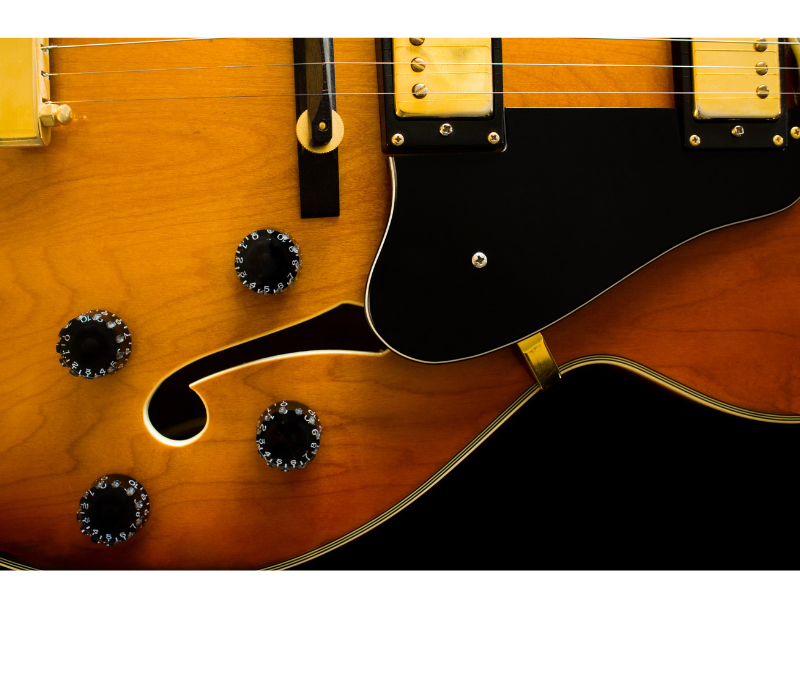Why the AM7 Guitar Chord is Essential
In the vast world of music theory, chords are the building blocks that give depth, color, and emotion to compositions. Among the many guitar chords, the AM7 guitar chord stands out for its smooth, rich, and jazzy tone.
In this guide, you’ll discover: ✅ How to Play AM7 on Guitar (Step-by-Step)
✅ AM7 Chord Positions & Variations
✅ How to Use AM7 in Jazz Progressions & Popular Songs
✅ How Extended Chords in C Major Can Improve Your Playing
What is the AM7 Guitar Chord?
The A minor 7 chord (AM7) is a four-note chord built using the formula:
1 – ♭3 – 5 – ♭7
✔ Notes: A (root) – C (minor third) – E (perfect fifth) – G (minor seventh)
✔ Sound: Mellow, warm, and versatile, often used in jazz, blues, and neo-soul.
✔ Common Progressions: AM7 → Dm7 → G7 or AM7 → Fmaj7 → Cmaj7
Many blues and jazz guitarists use AM7 along with Dm7 and E7♯13 to create soulful minor progressions.
🎸 How to Play the AM7 Guitar Chord
There are multiple AM7 chord positions on the guitar. Here’s an easy way to play it on the 5th fret:
Standard AM7 Chord Shape (5th Fret)
✅ Step-by-Step Finger Placement:
1️⃣ Index finger: 5th fret of the low E string (A) – Root note
2️⃣ Middle finger: 5th fret of the D string (E) – Perfect fifth
3️⃣ Ring finger: 5th fret of the G string (C) – Minor third
4️⃣ Pinky finger: 5th fret of the B string (G) – Minor seventh
🎯 Strum: Play from the A string down while avoiding the high E string.
✔ Pro Tip: To get a brighter or darker tone, try adjusting your hand position slightly.

❌ Stop Guessing. Start Shredding.
If you’re still fumbling through scale patterns and box shapes… it’s costing you progress.
FretDeck™ is the no-fluff system that shows you exactly how to master the fretboard—fast. Early access.
⚡️ This isn’t for dabblers. It’s for players who want results.
👉 Click here to join the pre-launch now
Early access. Limited rewards. Don’t wait.
🎼 AM7 Chord Variations & Best Voicings
Depending on the style of music, different AM7 chord voicings can create a unique sound.
🎸 Open Position AM7 Chord
✔ Easier for beginners
✔ Great for acoustic guitar
📍 Chord Diagram:
0
1
0
2
0
X
- Open A string (root)
- Index finger on 1st fret B string (G)
- Middle finger on 2nd fret G string (C)
- Open high E string (E)
✅ When to Use: Ideal for fingerpicking or soft ballads.
🎸 Barre Chord AM7 (5th Fret)
✔ Great for jazz & blues progressions
✔ Movable shape for transposing to different keys
📍 Chord Diagram:
5
5
5
5
X
X
- Barre across the 5th fret (E, B, G, and D strings).
✅ When to Use: This voicing works well in smooth jazz and bossa nova.
🎵 AM7 Chord Progressions for Jazz & Blues
If you want to improvise or compose, try these common jazz chord progressions with AM7:
1. Smooth Jazz Progression
➡️ AM7 – D7 – Gmaj7 – Cmaj7
🔹 Creates a laid-back, sophisticated vibe.
2. Minor Blues Progression
➡️ Am7 – Dm7 – E7♯13 – Am7
🔹 Used in classic blues guitar riffs.
3. Neo-Soul R&B Progression
➡️ AM7 – FMaj7 – D9 – Cmaj7
🔹 Adds a modern, dreamy feel.
🎯 Practice Tip: Play these with fingerpicking or jazz-style comping for a pro sound!
🎶 Extended Chords in the Key of C Major
To expand your harmonic vocabulary, try using extended chords along with AM7.
Common Extended Chords in C Major
| Chord | Notes | Sound |
|---|---|---|
| Cmaj9 | C-E-G-B-D | Airy & lush |
| Dm11 | D-F-A-C-E-G | Mysterious |
| Em7♭5 | E-G-B♭-D | Dark & jazzy |
| Fmaj13 | F-A-C-E-G-B-D | Bright & colorful |
✅ Pro Tip: Try these chord extensions in progressions for a richer sound!
🎸 Quick Recap & Next Steps
✔ AM7 is a must-know chord for jazz, blues, and R&B guitarists.
✔ Multiple voicings & positions allow you to use it in different styles.
✔ Extended chords in C Major add more color to your playing.
🎁 Get Your FREE Guitar Chord Charts!
👉 Download 27 Free Guitar Charts and master chords & scales instantly!

❌ Stop Guessing. Start Shredding.
If you’re still fumbling through scale patterns and box shapes… it’s costing you progress.
FretDeck™ is the no-fluff system that shows you exactly how to master the fretboard—fast. Early access.
⚡️ This isn’t for dabblers. It’s for players who want results.
👉 Click here to join the pre-launch now
Early access. Limited rewards. Don’t wait.
🔹 Next Lesson: To further enhance your understanding of the AM7 chord and its applications across the fretboard, explore our in-depth guide on the CAGED system. This method will help you visualize chord shapes and transitions more effectively.

🎸 Join the Guitar Freaks Patreon!
Get SoloCraft E-Book FREE!
When you join Guitar Freaks on Patreon, you’ll instantly unlock my full e-book SoloCraft—your complete guide to fretboard mastery and building unforgettable solos. Think of it as your shortcut to playing with confidence and creativity.
👉 Don’t miss out—join now and grab your free copy!










